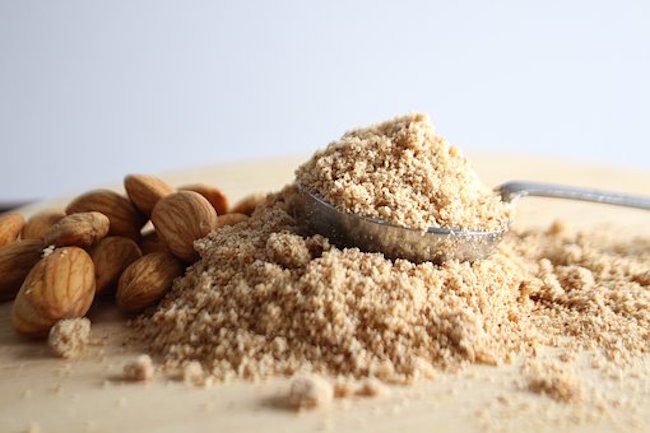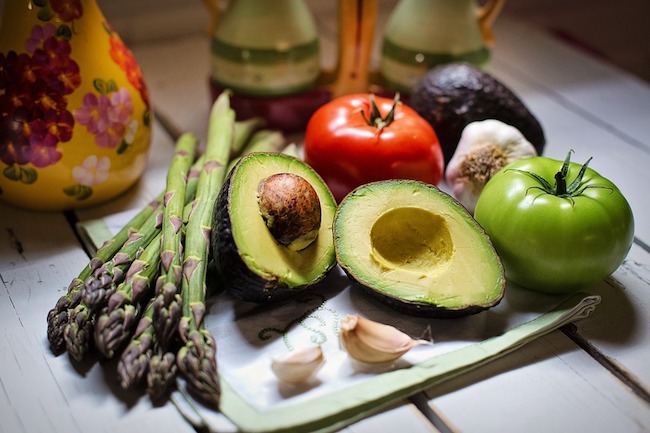20 Alternative Flours You Should Know by Dr. Joseph Mercola for Mercola
If you are still baking primarily with whole wheat flour because you believe it is better for your health, you may not be aware of the many alternative flours that exist. While some are worth checking out, there are others that are best avoided altogether, such as corn flour and soy flour, which did not make the list as they are often produced from genetically engineered crops.
Many of the 20 alternative flours highlighted below are gluten-free. If you have celiac disease, a gluten intolerance or have chosen to go gluten-free for other reasons, you are very likely familiar with some of them. Gluten, by the way, is a protein made of glutenin and gliadin molecules that forms an elastic bond in the presence of water, thereby holding bread and cakes together and giving them a spongier texture.
Gluten is a concern because it interferes with your body’s ability to break down and absorb nutrients from food. Gluten contributes to the formation of a glue-like, constipating lump in your gut that can interfere with proper digestion.
Undigested gluten prompts your immune system to attack your villi, the fingerlike projections lining your small intestine, resulting in side effects such as abdominal pain, diarrhea, constipation or nausea. Gluten consumption can also predispose you to increased inflammation, nutrient malabsorption and deficiencies and other health problems.
Eight Healthy Alternative Flours
The eight flours shown directly below are, in my opinion, the healthiest of the 20 alternative flours addressed in this article. Each is gluten- and wheat-free. Two of my personal favorites are almond and coconut flour. Again, you will need to experiment a bit to figure out which types of flours work best with your recipes. When in doubt, start with smaller amounts of each type of flour and adjust from there.
| Almond1 — Almond is produced by grinding and sifting blanched almonds into a fine powder. (The terms almond flour and almond meal are often used interchangeably, but they are not the same. Almond meal is made by grinding almonds with their skins intact, a process that produces a coarser end product.) Because almonds are a tree nut, almond flour is naturally gluten- and wheat-free.
Almond flour is sweeter than other flours, low in carbohydrates and packed with protein and fiber. It is a good source of copper, magnesium, manganese, phosphorus and vitamin E. While almond flour can be used as a 1-to-1 replacement for wheat flour, it will have the effect of making baked goods denser and flatter than usual. |
| Amaranth2,3 — Amaranth flour is a gluten-free, wheat-free flour produced by grinding the seeds of the amaranth plant into a fine powder. Not only does amaranth flour contain all nine essential amino acids, but it is also a good source of calcium, iron, magnesium and phosphorus. While technically not a grain, amaranth flour is grain-like and is described as having an earthy, nutty taste.
Because it is a dense flour, you will achieve better results when blending amaranth with other flours. Start with 25 percent amaranth and adjust from there. It does best in pancakes and quick breads and can also be used to thicken roux, soups, stews and white sauces. |
| Arrowroot4,5 — Derived from the root of the plant of the same name, arrowroot flour (also known as arrowroot starch) is a tasteless, odorless powder useful as a thickening agent.
It is far superior to cornstarch, which is often genetically engineered. It also can be used as a breading for fish and meats or blended with other gluten-free/wheat-free flours to make baked goods. Arrowroot contains a good amount of B vitamins, iron and potassium, but no protein, which gives it superior thickening power. As such, it is often used in confections because it creates a perfectly clear gel that can stand up to acidic ingredients and freezing. Accordingly, it is often used to thicken fruit gels and fruit sauces, including cranberry sauce and sweet and sour sauce. |
| Coconut6,7 — Coconut flour consists of the dried meat of fresh coconuts after they’ve been pressed to make coconut milk and most of the oil has been extracted. When used as a replacement for conventional flour, it adds a mild coconut flavor while imparting a rich texture and natural sweetness.
Coconut flour is nutritious, in part, because it boasts the highest percentage (48 percent) of dietary fiber of any flour. It’s also a good source of protein, while being very low in carbohydrates. And, it’s naturally gluten- and wheat-free. You can turn standard baked goods into delicious gluten-free, low-carb paleo treats by replacing the wheat flour with coconut flour and adding eggs. On average, add one egg for every ounce of coconut flour used — this will help the ingredients hold together when baked. Also, because it is very dense, you will need to slightly increase the liquids in recipes involving coconut flour. As a general rule of thumb, you can replace one-fifth of the flour in a recipe with coconut flour without compromising the taste or texture of the finished product. For a delicious breakfast treat, check out my recipe for coconut flour almond meal pancakes. |
| Hemp8 — Hemp flour (also known as hemp powder) is produced by milling and sifting hemp seeds after they are crushed to extract the oil. Hemp flour is gluten- and wheat-free and adds a mild, nutty flavor to baked goods. It is about 33 percent protein, making it a great source of amino acids. It is high in fiber, iron, magnesium and zinc.
This dense flour does best when combined with other alternative flours for baking. Limiting hemp powder to 25 percent of your flour blend will ensure a lighter texture, especially when baking bread. Due to its oily nature, hemp powder will go rancid unless it is refrigerated. |
| Millet9,10,11 — Millet is an ancient, drought-resistant grain — part of the grass family — grown widely in China, India and countries surrounding the Sahara Desert in western Africa. It has a protein structure similar to wheat, but is gluten- and wheat-free. It boasts a sweet, buttery, cornmeal-like flavor.
Millet is a good source of B vitamins and offers a decent amount of copper, manganese, magnesium, potassium and zinc. That said, millet also contains goitrogens, dietary substances known to impair your thyroid and iodine metabolism. In countries in which millet is consumed as a staple, the development of goiter is common.12,13 As such, you’ll want to moderate your intake. |
| Sorghum14,15 — Sorghum flour, which is both gluten- and wheat-free, is ground from the grain of the same name. It is an important dietary staple for some 9 million people worldwide, and is used often in Africa and India to make porridge and flat, unleavened breads. The Ethiopian flatbread called injera and a particular type of Indian roti are both made with sorghum.
Sorghum flour is a good source of antioxidants, B vitamins, fiber, iron phosphorus and protein. It has a mild, slightly sweet taste, which makes it a good addition to flour blends. It does not work well in cup-for-cup substitutions with regular flour. |
| Tapioca (cassava)16,17 — Tapioca flour is derived from the root of the cassava plant, producing a fine white flour useful as a thickener for gravies, sauces, soups and stir-fries. Tapioca adds chewiness to gluten-free and wheat-free baked items, and can be stored at room temperature for long periods of time.
Due to its bland taste, blending tapioca with other flours is best when using it for baking. Start by using 25 percent tapioca in your gluten-free blends and adjust according to your preference. When using sorghum flour for baking, you may want to increase your liquids slightly or add an extra egg to increase moisture content. If you are a diabetic or prediabetic, tapioca, as a digestive-resistant starch, is one of the recommended superfoods for diabetics. |
Two additional “flours” I want to bring to your attention are those derived from cauliflower and macadamia nuts. To me, “cauli-flour” is simply riced cauliflower that can be spiced up to make a tasty flatbread or pizza crust. You can rice cauliflower by placing pieces of raw, washed cauliflower in your food processor and blending it until it is reduced to tiny, rice-sized pieces.
If you like cauliflower, check out these delicious recipes for nutritious golden cauliflower flatbreadand cauliflower pizza crust. By using cauliflower instead of grain flours in these recipes, you replace starchy carbohydrates with whole-food nutrition and cut calories, while satisfying your craving for bread.
Similar to almond flour, macadamia flour is produced by using your food processor to transform whole, raw macadamia nuts into a fine powder. Macadamia flour has a sweet, nutty taste and is a healthy gluten-free, low-carb option. Macadamia flour is lower in both carbs and protein than almond flour. For a new taste twist, you can substitute macadamia flour into recipes calling for almond flour, including the coconut-almond pancake recipe mentioned above.
12 Flours to Avoid if You Want to Minimize Harmful Lectins
The 12 flours highlighted below are often touted as healthy alternatives to wheat, especially when it comes to gluten-free diets, whether it be celiac disease or simply a matter of personal preference. While some of these alternative flours are considered nutritious solely based on the amount of fiber, protein, vitamins and minerals they contain, their health benefits may be overshadowed by the presence of harmful plant lectins.




